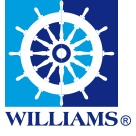Brazil’s National Waterway Transportation Agency (ANTAQ) has been working to standardize the tariff collection system at the country’s public ports. So far, 88% of them are listed as regulated at the Agency, with all documentation provided and ready to operate with the new tariff charts systematized by deadweight tonnage (DWT). Three years ago, Antaq saw the need to make tariff collections more efficient, as each port had its own way of setting charges. While some calculated their tariffs based on the volume unloaded, others used the size of vessels as their main criteria. So an accounting course was offered to port authorities, and the bars were defined, for example, by ship size: the larger the vessel, the higher the tariff for waterway access. The tariff cycle lasts for five years. A formal tariff review will be performed at the end of each period.
Source: Datamar News






